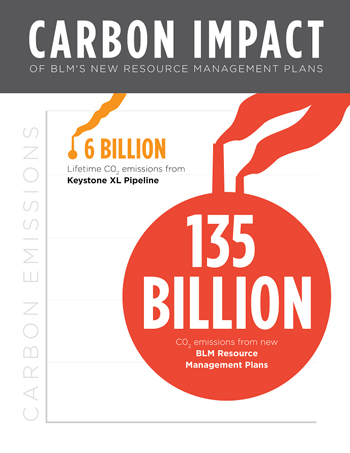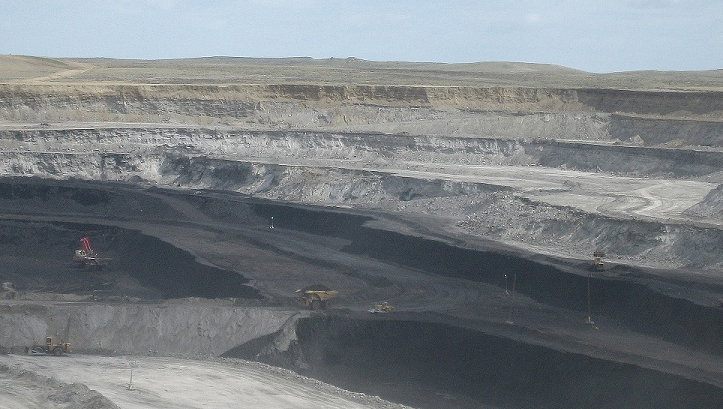Earlier this week, the Sierra Club and allies at Western Environmental Law Center, Powder River Basin Resource Council, WildEarth Guardians, and NRDC challenged two Bureau of Land Management (“BLM”) decisions [challenges available here and here] that may well chart the course for the energy future of the Powder River Basin in Montana and Wyoming. As written, the plans for BLM’s Buffalo and Miles City field offices are undoubtedly good for the coal industry, but they are bad for the climate, bad for wildlife and public lands, and bad for American people.
Resource Management Plans (often called “RMPs”) are landscape-level planning documents that lay out how BLM intends to balance the competing uses for the public lands that it oversees. The two plans at issue here are the most critical for anyone who spends time thinking about the amount of coal produced on our public lands or the amount of greenhouse gas emissions that inevitably result from that production.
These two plans, if finalized, would make an astounding 6.3 million acres of public lands and 78.5 billion tons of federal coal available for leasing over the next 20 years. Though admittedly not all of this potential development would occur, BLM’s plans predict more than 11 billion tons of coal would come out of the ground. Nearly all of this publicly-owned coal would eventually be burned in coal-fired power plants, releasing more than 18 billion tons of carbon dioxide.[1]

There is a growing chorus of voices from around the globe that recognize the urgency of meaningful climate action. The President and the Pope are both famously on record. This week, U.N. Secretary General Ban Ki-moon looked to the Paris climate summit in December and declared, “[n]ow is when true leadership is needed from the highest levels.” Last week, when the National Park Service released a report predicting $40 billion in sea-level rise damages to U.S. park lands, Department of Interior Secretary Sally Jewell explained how “sound science” “underscores the economic importance of cutting carbon pollution.”
How can the Interior Department call for cutting carbon pollution at the same time that it’s planning for billions of tons of coal development on its watch? Indeed, many in the environmental community have grown frustrated by this too familiar blind spot in our national climate policy. While the rest of the Obama Administration is taking meaningful steps to reduce greenhouse gas emissions and address climate disruption, BLM is putting forward plans that will result in billions of tons of carbon pollution.
As Bill McKibben recently put it:
This is not climate denial of the Republican sort, where people simply pretend the science isn’t real. This is climate denial of the status quo sort, where people accept the science, and indeed make long speeches about the immorality of passing on a ruined world to our children. They just deny the meaning of the science, which is that we must keep carbon in the ground.
* * * * *
So until BLM gets the climate memo that the rest of us read loud and clear, the question for advocates is: When does bad agency policy become unlawful agency indifference?
Under the National Environmental Policy Act (“NEPA”), federal agencies must make informed and transparent decisions about the environmental impacts of their plans and the projects they approve. Under proposed Buffalo and Miles City RMPs, BLM opted for a business-as-usual approach to fossil fuel development that simply presumed extraordinarily high levels of coal production are in the public interest. Despite clear and reasonable proposals put forward by the conservation community, BLM refused to consider a single alternative that entailed less coal mining on these public lands. Instead, BLM analyzed only full-production scenarios that are nearly identical by any reasonable measure with respect to coal. In doing so, BLM failed to engage in the reasoned consideration of alternatives that represents the very core of NEPA’s procedural mandate and is necessary for effective long-term management of our public lands.
To compound the problem, BLM improperly skewed its rather limited climate analysis, making it seem like the plans’ climate impacts are insignificant and perpetuating a disconnect between the agency’s recognition of the effects of climate change and the agency’s decision-making that allows for the continued leasing and development of massive quantities of coal, oil and natural gas from public lands. In the Buffalo RMP, for instance, BLM disclosed that the mining of 10.2 billion tons of coal could generate direct emissions of 196 million tons of CO2 over the next twenty years. But the agency failed to even mention the 16.9 billion tons of CO2 that will be emitted from burning all of that coal. In the context of the climate impacts of the plan, emissions from coal combustion are not just part of the equation – they are basically the whole equation. BLM may consider 16 billion tons be a lot of carbon pollution. Or it may not. The key consideration for purposes of NEPA, however, is that BLM’s plan would result in far greater carbon emissions than the agency disclosed to the public.
This is where bad agency policy meets unlawful agency indifference. At the resource management planning stage, where fundamental land use decisions are made, BLM must not only account for the full lifecycle of impacts from the fossil fuel production that the agency allows, it must also consider alternative uses for federal lands that do not include full-scale energy development. In this case BLM did neither, and these procedural flaws ought to be enough to send BLM and the Interior Department back to the drawing board where they can make more informed – and hopefully wiser – decisions.
Now is the time for true climate leadership from the highest levels. BLM has clearly missed the memo. Let’s hope President Obama and Secretary Jewell put their strong words into meaningful climate action.
[1] For coal from the Wyoming portion of the PRB, BLM uses a conversion factor of 1.659, meaning that for every ton of coal burned, 1.659 tons of carbon dioxide gets emitted from coal-fired power plants.
